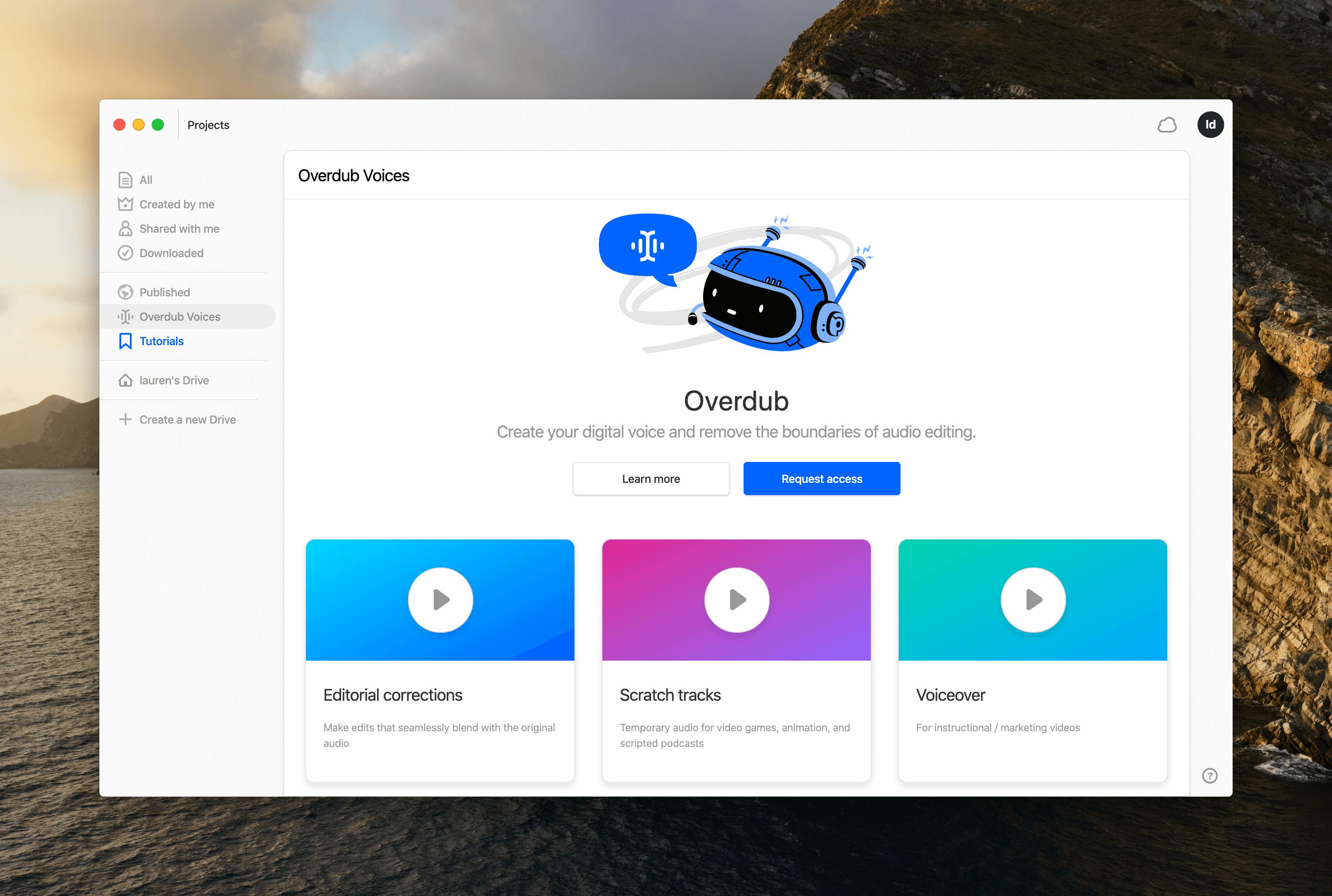Descript Overdub: Complete Buyer's Guide
AI voice cloning solution for text-based audio modification
Descript Overdub positions itself as an AI voice cloning solution that transforms content editing through text-based audio modification, enabling marketing teams to correct and generate audio content without traditional re-recording workflows[120][129].
Market Position & Maturity
Market Standing
Descript Overdub occupies a unique market position as an integrated voice cloning solution within a comprehensive content editing platform, differentiating from both standalone voice synthesis providers and traditional editing tools.
Company Maturity
Established market presence with documented enterprise customer implementations including Pushkin Industries and Pacific Content[136][137].
Longevity Assessment
Stable market position within the growing AI content creation sector, though competitive pressure from specialized providers may challenge market share in specific use cases.
Proof of Capabilities
Customer Evidence
Pushkin Industries uses cloned host voices for initial podcast drafts, enabling faster narrative development cycles and improved content iteration speed[137].
Quantified Outcomes
Documented time savings of 2-3 hours per episode for marketing teams managing regular podcast production schedules[27][33].
Case Study Analysis
Pacific Content's "robot Malcolm" implementation provides compelling evidence of successful hybrid workflow deployment[136][137].
Market Validation
Customer adoption metrics show 68% podcasters and creators, 22% B2B marketing teams, and 10% enterprise communications[133][137].
Competitive Wins
Market displacement evidence includes customers choosing Overdub over traditional re-recording workflows for content corrections[133].
Reference Customers
Enterprise implementations like Trend Radio maintaining broadcast continuity during host absences demonstrate practical business value[62].
AI Technology
Descript Overdub employs voice cloning technology that creates synthetic speech matching original speakers' vocal characteristics through streamlined voice sampling processes[128].
Architecture
The core technical architecture centers on text-based editing that automatically synchronizes audio modifications with corresponding video media[120][131].
Primary Competitors
ElevenLabs, Ausha, Capsho
Competitive Advantages
Text-based editing approach uniquely combines audio correction with video synchronization, eliminating traditional multi-tool workflows[120][131].
Market Positioning
Productivity-focused solution rather than premium voice synthesis provider, serving teams prioritizing workflow efficiency over maximum quality.
Win/Loss Scenarios
Wins when organizations prioritize integrated video and audio content workflows, require rapid content iteration capabilities, manage moderate content volumes, and accept quality trade-offs for efficiency gains.
Key Features

Pros & Cons
Use Cases
Pricing
Featured In Articles
Comprehensive analysis of AI Podcast Tools for AI Marketing & Advertising for AI Marketing & Advertising professionals. Expert evaluation of features, pricing, and implementation.
How We Researched This Guide
About This Guide: This comprehensive analysis is based on extensive competitive intelligence and real-world implementation data from leading AI vendors. StayModern updates this guide quarterly to reflect market developments and vendor performance changes.
138+ verified sources per analysis including official documentation, customer reviews, analyst reports, and industry publications.
- • Vendor documentation & whitepapers
- • Customer testimonials & case studies
- • Third-party analyst assessments
- • Industry benchmarking reports
Standardized assessment framework across 8 key dimensions for objective comparison.
- • Technology capabilities & architecture
- • Market position & customer evidence
- • Implementation experience & support
- • Pricing value & competitive position
Research is refreshed every 90 days to capture market changes and new vendor capabilities.
- • New product releases & features
- • Market positioning changes
- • Customer feedback integration
- • Competitive landscape shifts
Every claim is source-linked with direct citations to original materials for verification.
- • Clickable citation links
- • Original source attribution
- • Date stamps for currency
- • Quality score validation
Analysis follows systematic research protocols with consistent evaluation frameworks.
- • Standardized assessment criteria
- • Multi-source verification process
- • Consistent evaluation methodology
- • Quality assurance protocols
Buyer-focused analysis with transparent methodology and factual accuracy commitment.
- • Objective comparative analysis
- • Transparent research methodology
- • Factual accuracy commitment
- • Continuous quality improvement
Quality Commitment: If you find any inaccuracies in our analysis on this page, please contact us at research@staymodern.ai. We're committed to maintaining the highest standards of research integrity and will investigate and correct any issues promptly.